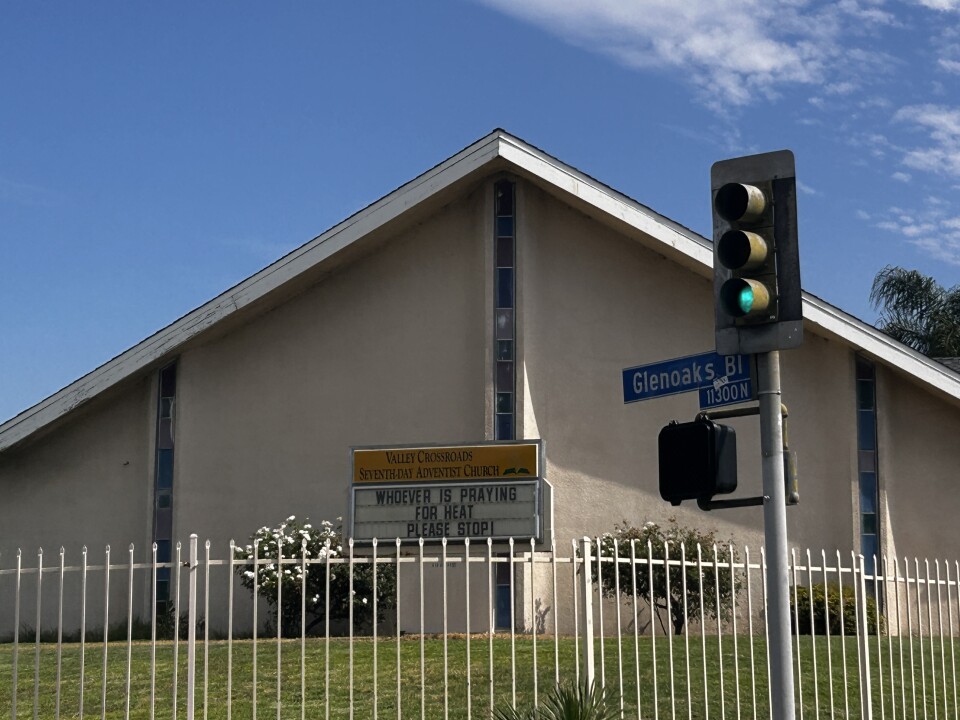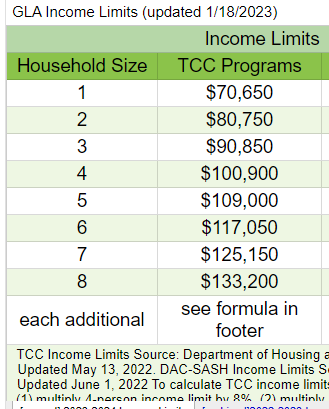This story is free to read because readers choose to support LAist. If you find value in independent local reporting, make a donation to power our newsroom today.
Low-Income Households Are Getting Help From A Free Solar Rooftop Program

Gloria and Macedonio Zúñiga have lived in Pacoima for more than 45 years. They emigrated from Mexico and built a life here — Gloria worked as a seamstress and Macedonio as a machinist. They eventually bought a home and raised three children.
Now retired, their days are mostly spent watching over their six young grandchildren.
But in recent years, they’ve noticed the heat only going up. She said every day has felt hotter than the last.
“El calor cada día lo hemos sentido más, más terrible, más caliente,” said Gloria.

Historically, Pacoima, one of the hottest neighborhoods in L.A., has seen on average around 50 days above 90° F every year.
By 2035, the neighborhood is projected to experience on average 108 days above 90° F.
The worsening heat has not only been more miserable physically, but also led to higher electric bills for the Zúñigas, who now live on a fixed income.
Gloria said that everything has changed when it comes to their electricity bills, and every day it's more expensive.

“Todo ha cambiado mucho en las cuentas de la electricidad,” Gloria said. “Cada día es más cara.”
In the summer, their bills would often climb to $600 or more per month. But that’s not the case anymore. Last June, the couple had rooftop solar installed on their home. Gloria said the panels have cut their electric bills in half in the summer — to about $270 or $300 a month.
Rising Rates
Lower income households pay a disproportionate amount of their income to utility bills, primarily electricity. As the state moves to electrify, bigger electric bills could further burden low- and middle-income households without changes to rate structures, experts say, because what goes into what you pay for electricity isn't just about how much you use.
“Es mejor, mucho mejor,” said Gloria — it’s better, much better.
Saving money with rooftop solar
Rooftop solar helps you save money on electric bills, not because you use less power, but because the solar panels generate energy. That energy is sent back to the electric grid we all rely on, and then every month, a credit shows up on your bill paying you back for that power.
“So it’s kind of like a balance sheet,” said Ruben Montoya, a lifelong Valley resident and community engagement coordinator for GRID Alternatives, the nonprofit that installed the Zúñigas' panels.
More than 1.5 million households, government buildings and businesses in California have solar panels on their rooftops. Early residential adopters have been mostly affluent, with high upfront costs putting rooftop solar out of reach for most low- and moderate-income households.
But that trend is shifting. In California, most households with solar have an income of less than $150,000 per year, according to data from the Lawrence Berkeley National Laboratory.
Rooftop Solar Stall
New state rules on rooftop solar could slow progress broadening access to rooftop solar, but the federal Inflation Reduction Act is expected to dramatically boost access to clean energy for low- and middle-income communities.
That's due to the fact solar panels have gotten a lot cheaper, plus investment in subsidized programs that target underserved communities: the Zúñigas got their panels for free as part of a state program called Transformative Climate Communities.
The program uses cap-and-trade money as well as money from the state’s general fund to pay for climate action at the neighborhood level. (You can read more about the program and how it’s becoming a federal funding model here).
So far, solar panels have been installed on more than 20 homes in Sun Valley and Pacoima, including the Zúñigas, and there's enough money for about 175 homes total. The program is being led by the grassroots group Pacoima Beautiful, who in 2018 partnered with GRID Alternatives and other public and private partners (the Green Together Collaborative) and were awarded $23 million from the state (plus more than $38 million in leveraged funds).
Learn more about GRID’s free solar program for single-family and multi-family households:
- Frequently Asked Questions for GRID's free solar program
- Learn more about GRID’s solar installer training program
- Univision coverage of GRID Alternatives’ free solar program
- Learn more about the Green Together Collaborative and climate action in the San Fernando Valley here.
- Learn more about Transformative Climate Communities funding here.

The money has been used to carry out community-driven climate projects, like purchasing electric buses, planting hundreds of trees, building affordable all-electric housing — and installing rooftop solar.
Watts and Ontario have also received funds to install rooftop solar and carry out similarly holistic climate projects, along with Stockton and Fresno. They’re the first five California communities to receive the funding.
Building trust after solar scams
But outside of funding, one of the biggest challenges is actually getting homeowners to trust the program and that the installation is actually free, said Montoya.
“At the beginning it is a struggle because most of the community has been kind of victimized by bad business practices,” he said.
Solar scammers often target lower-income communities with offers of free panels which never seem to materialize. It’s a big problem in Pacoima, the San Fernando Valley and beyond, said Teresa Perez, who grew up in East L.A. and is the grants administrator for GRID’s work in Pacoima.
“I think it's GRID Alternatives’ responsibility to really gain the trust of the community,” Perez said. “That is something we've been struggling with since the beginning of this grant.”
To build trust, GRID has started a media campaign aimed at Spanish speakers who may qualify for the program. A luchador named Señor Sol spreads the message of free solar panels, which are installed by local community members who are trained by GRID.
It’s one of only two state-funded programs that provide solar installations at no cost to low-income households. Gloria Zúñiga said she trusted the program because she learned about it through Pacoima Beautiful, which has a long history with the community.
Other state-funded solar programs
The state's Disadvantaged Communities – Single-Family Solar Homes (DAC-SASH) program provides $8.5 million in incentives every year to help homeowners in eligible communities go solar, and provides training for local community members to become solar installers. It's also administered by GRID Alternatives. See if you qualify here.
The state's Solar On Multifamily Affordable Housing (SOMAH) program offers similar incentives to install solar on qualifying apartments.
Now, she hopes other neighbors will trust GRID if they knock on their door.
“Es algo muy bueno para el ambiente, para la salud de los niños, de todas las personas,” Gloria said. “[No] más que la gente tenga confianza y lo haga.”
She said solar is better for the environment, and for the children’s and everyone’s health. Now, she said, people just need to trust that GRID is truly free.
Savings make a big difference
Montoya said the free installation and subsequent savings on electric bills make a huge difference for community members he’s worked with.

“These kinds of programs can impact somebody from, you know, eating rice and beans every day to maybe adding a little protein because I have met homeowners that really need this kind of help,” he said.
Montoya said retired seniors such as the Zúñigas are especially hard hit because they have a fixed income.
“Somos mexicanos, hemos trabajado muchísimo,” Gloria said. “Ya nos retiramos. Ahora estamos dedicados a los niños.”
"We're Mexican, we've worked a lot," she said. "We're already retired. Now we are dedicated to the children."
Gloria said the savings have helped them dedicate more time and resources to their grandchildren.
At the end of our chat, one of the Zúñigas’ young grandchildren, Ignacio, who goes by Nacho, came up to me. He had something to say on the benefits outside of saving money.
“If we don't have Earth, then we won't exist because Earth is where we live,” he said.
Then he went back to a more pressing priority … playing.
Resources for GRID’s free solar program
The free solar program is only for households that qualify as low income. The below graph shows the income limits for households of different sizes. See if you qualify for GRID’s free solar program here or call 877-672-9276.









